
Remember way back when salesmen used to go door-to-door? You may not realize it, but they played a huge role in creating the opportunities that exist today for affiliate marketers.
Like today’s affiliate marketers, salesmen in times past received a commission on every product sold. But unlike those salesmen, affiliate marketers are a lot more efficient, thanks to all the technology they now have access to.
The best affiliate marketers know they won’t get far if they try to sell to everyone; instead, they invest time and effort identifying potential customers and then creating customized marketing strategies targeted specifically to them. And one of those strategies is content.
Want to discover the best types of content for affiliate marketing?
Keep reading…
Best Types of Content for Affiliate Marketers
If you’re looking for the “secret sauce,” then you’re going to be disappointed. What works for one affiliate marketer might not for another.
The two factors of success that all marketers agree on are quality and frequency of content. If you curate loads of great content and publish it in the right places, sales will follow.
Here are some forms of content that you should consider.
Level-Up your Affiliate Marketing Game
Visit our one-stop-shop for Affiliate Strategy to inspire your next move. It’s your turn!
1. Ebooks & Guides
Well-written ebooks and guides are not only great for brand building and gaining audience trust; they are awesome for creating leads. This technique is increasingly used by affiliate marketers to promote products or services. Promote your product in a great guide, and you’ll get paid every time someone makes a purchase using your affiliate link or code.

Ebooks and guides are also one of the best ways to build email lists. By incentivizing users to sign up for your mailing list in exchange for an ebook, you can follow up later with email marketing.
2. Emails
Some say email marketing is dead. In reality, this is far from the truth. Despite the social media boom, email is still an essential marketing tool for those who know how to use it.
Many affiliate marketers use email marketing to earn money. By tracking the behavior and activities of consumers, marketers can build quality email lists that then help them run targeted campaigns.
Promoting a product or service to those who have already expressed interest in similar items increases the chances of conversion via a follow-up email.
For example, a user downloads an ebook titled “The Ultimate Guide to Video Marketing,” provides their email address and agrees to receive emails regarding similar offers from you. So you can assume the user is interested in learning about or using video marketing. This allows you to customize offers you send to this particular person in the future, based on this previously expressed interest.
3. Customized Landing Pages
According to Charles Ngo, one of the industry’s most renowned affiliate marketers, poor landing pages are a key factor in failed marketing campaigns.
Landing pages are opportunities to convert visitors into leads. However, many marketers take the wrong approach and therefore don’t capitalize on them fully.
When it comes to creating a landing page, there is no one-size-fits-all approach. Every landing page, even if it is created by the same company or individual, needs to be customized according to the needs, interests, and behavior of the target audience. It needs to be optimized for conversions.
To get desired results, every single element on the landing page, from the headline to the copy, layout, and CTA, should be coherent and entice visitors to take the desired action.
In a movie trailer, the best scenes are edited into a sequence that will gain attention and incite curiosity in potential moviegoers. The same applies when promoting a product or service – you want to highlight the best and most intriguing features.
Make sure your landing page:
- Is optimized both for desktop and mobile devices
- Loads quickly
- Encourages visitors to take immediate action by creating a sense of urgency
- Has clear and effective CTAs
- Is void of navigation options or distractions that can divert visitor attention
4. Blog Posts
As an affiliate marketer, it is highly likely you already have an active blog. If you don’t, you should start now. One great way to do that is to hire a blog writing service.
Blogging increases the chances of earning money through affiliate products, helping you gain audience trust. When people trust your expertise, knowledge, and opinion, they are likely to follow your recommendations.
However, if you are not being honest and, instead, misguide your audience by giving fake reviews or endorsing products that do not cater to their needs or solve their problems, your efforts will be counter-productive.
While you might feel tempted to cut corners and gain short-term monetary benefits, they won’t last long.
Remember, your relationship with your audience is important, and nothing is worth risking a bond that can take years to build.
To make sure your efforts are not in vain or harmful to your reputation, always promote products and services relevant to your target audience as well as to your blog. No matter how much commission a company is offering you, if their product does not cater to your blog’s niche, promoting it won’t do you any good.
Marketing irrelevant products will only destroy the reputation you invested a lot of time and effort to earn. Conversely, a logical and beneficial connection between your blog and the products will go a long way to boosting your results.
Here’s a great example: if you search for “best running shoes” on Google, the top organic result is a blog post by Runner’s World.
The blog post provides readers with a comprehensive list of the best running shoes available on the market, along with prices and links to buy them. When a reader clicks on the “Buy Now” tab, they are taken to the seller’s website.
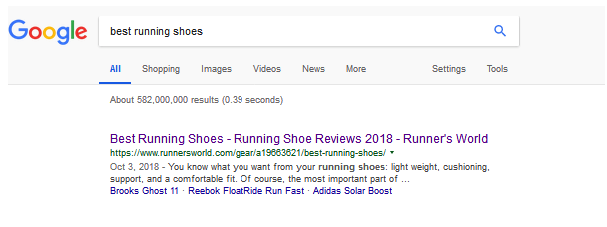
At the end of the page, the website clearly mentions that Runner’s World participates in affiliate programs.
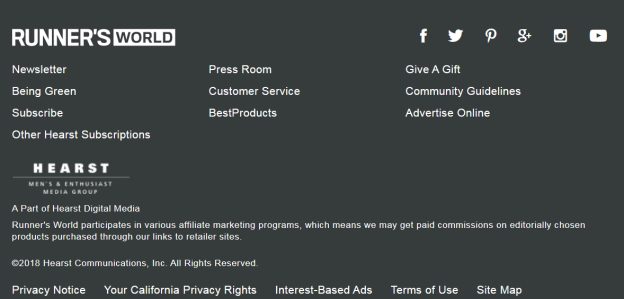
Certain companies also offer discounts when you buy a product or service via an affiliate link. For example, most posts from the Jeff Bullas blog have an affiliate link at the end, making his visitors eligible for a special discount from Bluehost.
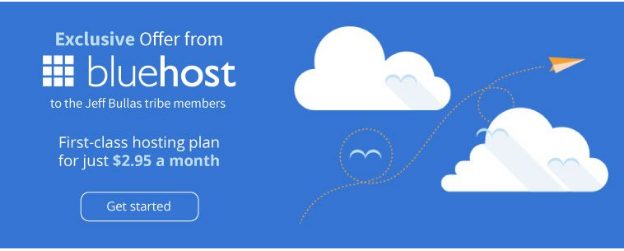 5. Videos
5. Videos
With more than 1.8 billion monthly users, YouTube is not only the largest video platform but also a highly profitable channel for affiliate marketing. Just like written content, marketers use videos to redirect traffic to relevant landing pages or a seller’s website.
We all have seen videos in which a person talks about a product and its benefits, followed with a link to buy it. Some marketers clearly disclose to viewers that the links or codes are affiliate, whereas others do not.
Let’s take two examples of videos about weight loss supplements:
Video 1 shows the following details in the description:
There’s a link to buy the recommended product, plus some other sponsored products, as well as a link to the presenter’s blog, which features more weight loss products and purchase links. What’s missing is a clear disclosure about the affiliate nature of all these links.
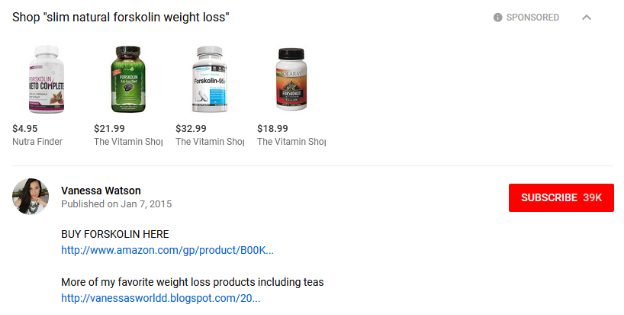
Video 2 is an example of a marketer who is not reticent about her affiliate activities. Check out the video, which clearly states in the description that the links and codes are affiliate.

How can affiliate marketers use all types of content? Here’s an example.
The world-famous travel expert, blogger, and best-selling author Matthew Kepnes, or Nomadic Matt as he is widely known, effectively uses a range of affiliate content on his website.
Let’s take a look.
Nomadic Matt offers a variety of travel guides and ebooks:
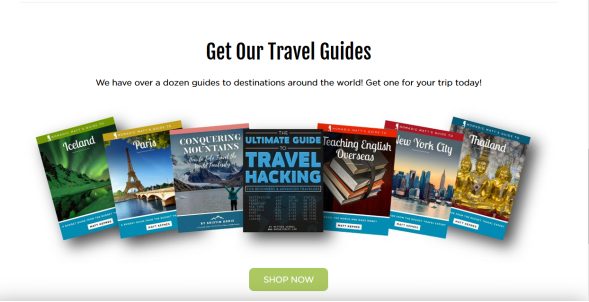
He uses a unique technique to build his email list: signing up to a Book Club, in which he shares his favorite titles with his followers.
The book club has a customized landing page, which describes for visitors what they are going to get, and invites them to join by entering their name and email.
The page features some suggested books visitors can buy just by clicking on them.
Matt has also created customized landing pages for the numerous guides and ebooks he offers to his audience.
In addition, he promotes affiliate products on his blog:
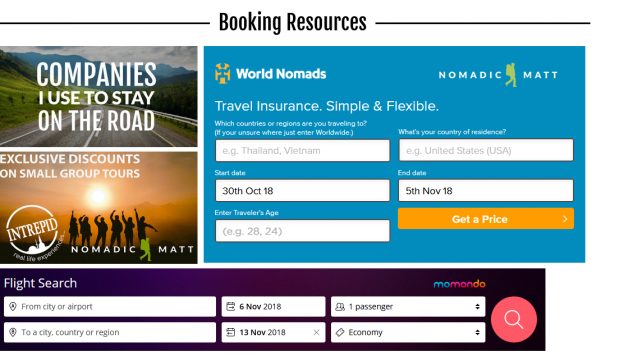
There is also a Travel Resources page on his website where he provides recommendations for everything from airlines and accommodation, to travel gear, transport, and tour guides. However, rather than keeping his audience in the dark, he clearly tells them they are affiliate products by displaying a disclosure at the top of the page.
Affiliate content marketing, if done right, is a mutually beneficial strategy – it not only helps marketers earn a handsome amount of money, but is also highly useful for businesses to increase their customer base.
Depending on your target niche and audience, you can either use one, a few, or all of the content formats outlined above to promote affiliate products. Best of luck with all your affiliate marketing efforts!